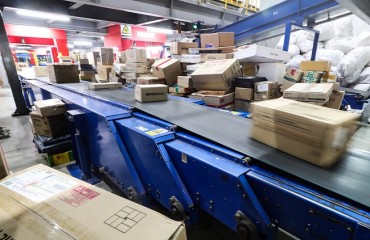
The new semiconductor device created by the research team maintains the characteristics of semiconductors, but turns certain areas into conductors when Ditellurium molybdenum (MoTe2), the main substance, is exposed to lasers. (image: Kobiz Media / Korea Bizwire)
SEOUL, Aug. 7 (Korea Bizwire) – A Korean research team has developed a semiconductor device using new material that changes itself from a semiconductor to conductor as its temperature changes. The new device lessens power loss and operates much faster.
The new semiconductor device created by the research team maintains the characteristics of semiconductors, but turns certain areas into conductors when Ditellurium molybdenum (MoTe2), the main substance, is exposed to lasers.
MoTe2 is a semiconductor at room temperature, but after it is exposed to high temperatures, it turns into a conductor. By having properties of both conductors and semiconductors, it is used in electronic devices, sensors and optical devices. It is also receiving attention as a new substance that could overcome the downsizing limit of silicon.
By using MoTe2, the semiconductor joints – where electrodes meet – can change into conductors simply by exposure to lasers, instead of using the traditional method of inosculating semiconductors and conductors. The new method will decrease the resistance of the joints, which leads to less power loss and a 50 times faster electron transfer.
Also, total manufacturing costs can be cut, as the process of adjoining the semiconductor and conductor can be omitted.
The research team predicts that the developed technology could be used within five years in the semiconductor industry.
Results of this research were published in an issue of Science, an international science journal, on August 7.
By Francine Jung (francine.jung@kobizmedia.co.kr)






